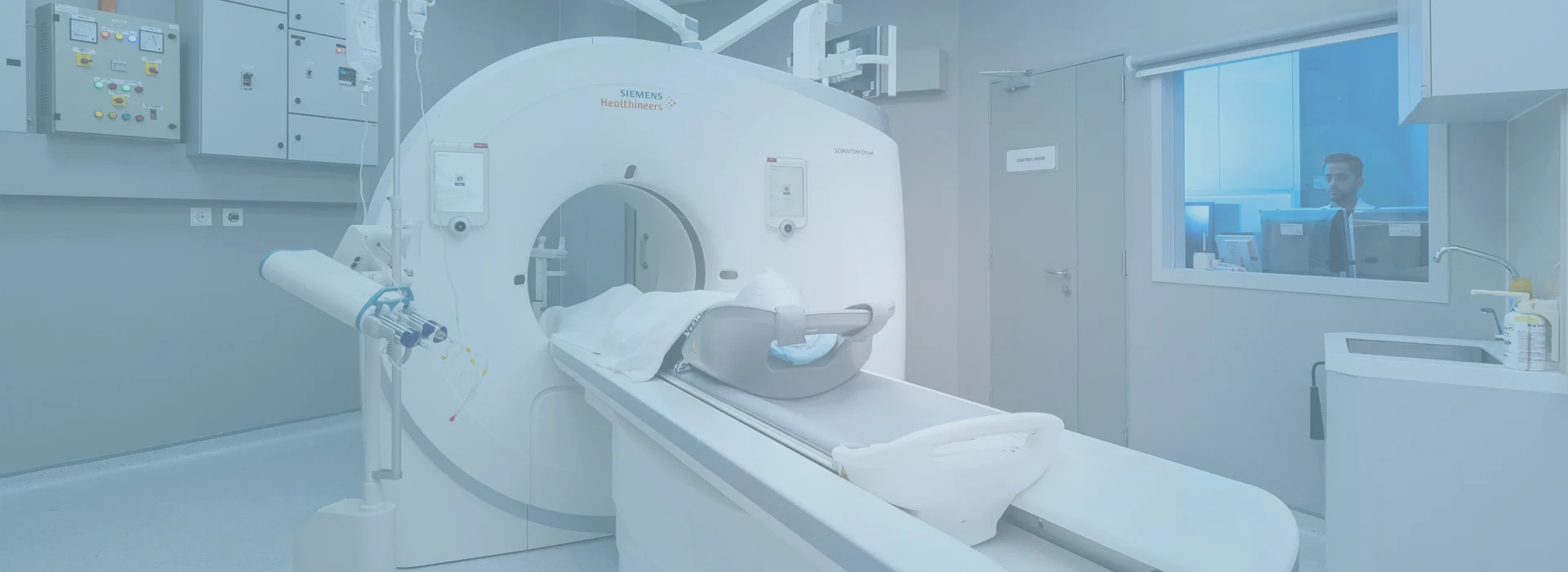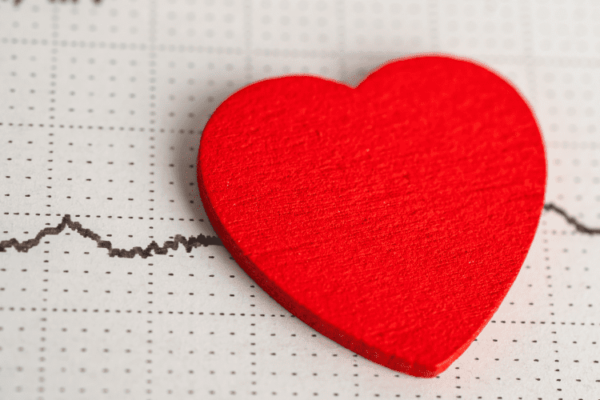
10 Oct What Do You Need to Know About Cancer & 9 Most Common Cancer and Signs
What Do You Need to Know About Cancer & 9 Most Common Cancer and Signs
By Island Hospital | Oct 10, 2019 11:47:24 AM
Most people know of someone in their family or a friend who has been diagnosed with cancer. Cancer affects everyone – the young and old, the rich and poor, men, women and children – and represents a tremendous burden on patients, families and societies. Cancer is one of the leading causes of death in the world.
Cancer is the second leading cause of death globally, and is responsible for an estimated 9.6 million deaths in 2018. Globally, about 1 in 6 deaths is due to cancer. Lung, colorectal, stomach, liver and breast cancers cause the most cancer deaths each year.
The earlier doctors find cancer, the sooner treatment can start. So it is helpful to know about this deadly disease and their warning signs.
What is Cancer?
Cancer is a disease—that is caused by cellular changes that control the way they function, especially how they grow and divide.
Genetic changes that cause cancer can be inherited from our parents. They can also arise during a person’s lifetime as a result of errors that occur as cells divide or because of damage to DNA caused by certain environmental exposures. Cancer-causing environmental exposures include substances, such as the chemicals in tobacco smoke, and radiation, such as ultraviolet rays from the sun.
Cancer can start almost anywhere in the human body, which is made up of trillions of cells. Normally, human cells grow and divide to form new cells as the body needs them. When cells grow old or become damaged, they die, and new cells take their place. When cancer develops, however, this orderly process breaks down. As cells become more and more abnormal, old or damaged cells survive when they should die, and new cells form when they are not needed. These extra cells can divide without stopping and may form growths called tumours.
Cancer cells differ from normal cells in many ways that allow them to grow out of control and become invasive. Unlike normal cells, cancer cells continue to divide without stopping.
Cancerous tumours are malignant, which means they can spread into, or invade, nearby tissues. In addition, as these tumours grow, some cancer cells can break off and travel to distant places in the body through the blood or the lymph system and form new tumours far from the original tumour.
Cancer cells are also often able to evade the immune system, a network of organs, tissues, and specialised cells that protects the body from infections and other conditions. Although the immune system normally removes damaged or abnormal cells from the body, some cancer cells are able to “hide” from the immune system.
Tumors can also use the immune system to stay alive and grow. For example, with the help of certain immune system cells that normally prevent a runaway immune response, cancer cells can actually keep the immune system from killing cancer cells.
Tissue Changes That Are Not Cancer
Not every change in the body’s tissues is cancer. Some tissue changes may develop into cancer if they are not treated, however. Here are some examples of tissue changes that are not cancer but, in some cases, are monitored:
- Hyperplasia occurs when cells within a tissue divide faster than normal and extra cells build up, or proliferate. However, the cells and the way the tissue is organized look normal under a microscope. Hyperplasia can be caused by several factors or conditions, including chronic irritation.
- Dysplasia is a more serious condition than hyperplasia. In dysplasia, there is also a buildup of extra cells. But the cells look abnormal and there are changes in how the tissue is organized. In general, the more abnormal the cells and tissue look, the greater the chance that cancer will form.
Normal cells may become cancer cells. Before cancer cells form in tissues of the body, the cells go through abnormal changes called hyperplasia and dysplasia. In hyperplasia, there is an increase in the number of cells in an organ or tissue that appear normal under a microscope. In dysplasia, the cells look abnormal under a microscope but are not cancer. Hyperplasia and Dysplasia may or may not become cancer.
Cancer Stages
Cancer staging is the process of determining the extent to which a cancer has developed by growing and spreading. The stage generally takes into account the size of a tumour, if or where it has spread, and whether it is affecting other parts of the body and whether it has appeared in more distant locations (metastasized).
Working out the stage of a cancer is important, as it helps the doctors to decide the most effective type of treatment. Doctors often use diagnostic tests to determine a cancer’s stage. Knowing the stage helps the doctor to plan treatment, including the type of surgery and/or whether chemotherapy or radiation therapy are needed.
A 4-stage system is the most common way to stage cancer.
- Stage 0: Precancerous cells are present. This stage describes cancer in situ, which means “in place.” Stage 0 cancers are still located in the place they started and have not spread to nearby tissues. This stage of cancer is often highly curable, usually by removing the entire tumour with surgery.
- Stage 1: This stage is usually a small cancer or tumour that has not grown deeply into nearby tissues. It also has not spread to the lymph nodes or other parts of the body. It is often called early-stage cancer. Stage I cancer can be surgically removed if small enough.
- Stage 2: In general, these 2 stages indicate larger cancers or tumours that have grown more deeply into nearby tissue. They may have also spread to lymph nodes but not to other parts of the body. Stage II cancer can be treated by chemotherapy, radiation, or surgery.
- Stage 3: This stage usually means the cancer is larger and has extended to beyond the immediate region of the tumour and may have invaded nearby lymph nodes and muscles, but has not spread to distant organs. Although this stage is considered to be advanced, there are a growing number of effective treatment options.
- Stage 4: This stage means that the cancer has spread to other organs or parts of the body. It may also be called advanced or metastatic cancer. Later in stage 4, it will spread to distant organs, including the liver, bones, lungs, and lymph nodes. Stage IV cancer can be treated by chemotherapy, radiation, or surgery. Despite treatment, a patient’s mortality rate can be significantly higher with Stage IV cancer.
9 Most Common Cancers and Signs
There are more than 100 types of cancer, and some are more common than others, depending on things like your age, gender, and racial or ethnic group. For example, prostate cancer only affects men, and breast cancer is far more likely in women but men do get breast cancer as well. Keep in mind that many cancers do not have symptoms in their early stages. And if you do have symptoms, they could also show up with other conditions, so you will need tests to find out the cause.
1. Lung Cancer
Lung Cancer is a type of cancer that begins in the lungs. People who smoke have the greatest risk of lung cancer, though lung cancer can also occur in people who have never smoked. The risk of lung cancer increases with the length of time and number of cigarettes you have smoked.
Signs of lung cancer include:
- A persistent cough that does not go away and gets worse over time
- Coughing up blood
- Wheezing or shortness of breath
- Constant chest pain
- Bone pain
- Hoarseness or other voice changes
- Regular lung infections (like pneumonia or bronchitis)
- Losing weight without trying
- Not feeling hungry
- Frequent headaches
- Blood clots
Lung cancer may be asymptomatic or non-specific until it is advanced (also referred to as late-stage cancer). That is because your lungs have few nerve endings, so tumours can grow there without causing pain. If you have any of the signs above, see your doctor to get tested.
2. Breast cancer
Breast cancer can occur in both men and women, but it is far more common in women.
Signs of breast cancer include:
- A new lump or mass in your breast, armpit, or around your collarbone. Most lumps are painless, but some may be painful or tender. (Many lumps aren’t breast cancer, though. The only way to tell is have your doctor check it.)
- Swelling in your breast
- Irritation, dimpling (which may cause your skin to look like an orange peel), thickening, redness, or scaliness of the skin on your breast
- Pain in your breast or nipple
- Nipple discharge that isn’t breast milk
- Nipple retraction (a nipple that’s “dented” or turned inward)
These signs do not always mean you have breast cancer. If you find a lump or other change in your breast — even if a recent mammogram was normal — make an appointment with your doctor for prompt evaluation.
Concerned about breast cancer? Learn everything Learn everything you need to know in our comprehensive breast cancer guide to understand symptoms, treatments, and proactive steps for your health. Read now.
3. Colorectal Cancer
Colorectal Cancer also known as bowel cancer and colon cancer, is the development of cancer from the colon or rectum (parts of the large intestine).
Signs of colorectal cancer include:
- Losing weight without trying
- Weakness and exhaustion
- Changes in your bowel habits (like constipation, diarrhoea, or narrow stool) that lasts for more than a few days
- Pain in your stomach or gut that may come or go but lasts for more than a few days
- Pressure in your rectum or abdomen. This might feel like you constantly need to have a bowel movement.
- Blood in your stool (which may look dark red or black)
- Bleeding in your rectum. This may appear as bright red blood on toilet paper.
Colorectal cancers do not always cause symptoms until they are advanced. But signs of colorectal cancers can also be signs of other problems, like haemorrhoids or irritable bowel syndrome. See your doctor if you have any of these problems. Early screening for colorectal cancer is crucial.
4. Prostate Cancer
Prostate Cancer is one of the most common types of cancer in men. Usually prostate cancer grows slowly and is initially confined to the prostate gland, where it may not cause serious harm. However, while some types of prostate cancer grow slowly and may need minimal or even no treatment, other types are aggressive and can spread quickly.
Signs of prostate cancer include:
- Pain (which may feel like a burning sensation) during urination
- Needing to pee often, especially at night
- Trouble getting or keeping an erection
- Changes in ejaculation, such as pain during ejaculation or a decrease in the amount of fluid ejaculated
- Blood in the urine or ejaculation fluid
- Pain in your lower back, thighs, hips, or pelvic area
- Pressure or pain in your rectum
Prostate cancer does not usually cause early warning signs. If you are a man over age 55 and do not have any symptoms; you should talk to your doctors about getting tested for the disease. If you do have symptoms, see your doctor right away. These symptoms can also be due to other problems like prostatitis (inflammation of the prostate).
5. Pancreatic Cancer
Pancreatic Cancer begins in the tissues of your pancreas — an organ in your abdomen that lies horizontally behind the lower part of your stomach. Your pancreas releases enzymes that aid digestion and hormones that help manage your blood sugar.
Signs of pancreatic cancer include:
- Losing weight without trying
- Pain in your upper abdomen that may go into to your back
- Depression
- Blood clots
- Developing diabetes
- Feeling exhausted or weak
- Yellowing of your skin and the whites of your eyes (known as jaundice)
Pancreatic cancer does not usually shows signs until the disease is advanced. It is seldom detected in its early stages. But for people with pancreatic cysts or a family history of pancreatic cancer, some screening steps might help detect a problem early.
6. Liver Cancer
Liver Cancer also known as hepatic cancer and primary hepatic cancer, is cancer that starts in the liver.
Signs of liver cancer include:
- Losing weight without trying
- Not having an appetite or feeling very full after eating a small amount of food
- Nausea or vomiting
- An enlarged liver. This may feel like a mass under your ribs on your right side.
- An enlarged spleen. This may feel like a mass under your ribs on your left side.
- Pain in your gut or near your right shoulder blade
- A swollen abdomen
- Skin itching that does not have another cause
- Yellowing of your skin and the whites of your eyes (known as jaundice)
- Abnormal bruising or bleeding
- Fever
- Enlarged veins on your belly
- Lightheadedness or fainting
- Weakness or confusion
- Constipation
Make an appointment with your doctor if you experience any signs or symptoms that worry you.
Worried about liver cancer? Discover simple steps to keep your liver healthy and reduce your cancer risk in our comprehensive guide.
7. Cervical Cancer
Cervical Cancer is a type of cancer that occurs in the cells of the cervix — the lower part of the uterus that connects to the vagina. Early-stage cervical cancer generally produces no signs or symptoms.
The most common symptoms of cervical cancer are:
- Pelvic pain or pain during intercourse
- Vaginal bleeding after intercourse, between periods or after menopause
- Watery, bloody vaginal discharge that may be heavy and have a foul odour
These symptoms can have other causes, including infection. Anyone who experiences any of these symptoms should see a doctor.
8. Stomach Cancer
Stomach Cancer usually begins in the mucus-producing cells that line the stomach.
Signs of gastroesophageal cancer and stomach cancer may include:
- Fatigue
- Feeling bloated after eating
- Feeling full after eating small amounts of food
- Severe, persistent heartburn
- Severe indigestion that is always present
- Unexplained, persistent nausea
- Stomach pain
- Persistent vomiting
- Unintentional weight loss
9. Leukaemia
Leukaemia is cancer of the body’s blood-forming tissues, including the bone marrow and the lymphatic system. Leukaemia symptoms vary, depending on the type of leukaemia.
Common leukaemia signs and symptoms include:
- Fever or chills
- Persistent fatigue, weakness
- Frequent or severe infections
- Losing weight without trying
- Swollen lymph nodes, enlarged liver or spleen
- Easy bleeding or bruising
- Recurrent nosebleeds
- Tiny red spots in your skin (petechiae)
- Excessive sweating, especially at night
- Bone pain or tenderness
Leukaemia symptoms are often vague and not specific. You may overlook early leukaemia symptoms because they may resemble symptoms of the flu and other common illnesses.
If you have signs and symptoms that worry you, make an appointment with the team of oncologists in Island Hospital.
Facing a leukemia diagnosis? Explore our detailed roadmap to understand treatment options and take steps towards regaining your health. Read now.
Early diagnosis
Cancer mortality can be reduced if cases are detected and treated early. When identified early, cancer is more likely to respond to effective treatment and can result in a greater probability of surviving, less morbidity, and less expensive treatment. Significant improvements can be made in the lives of cancer patients by detecting cancer early and avoiding delays in care.
Screening
Screening aims to identify individuals with abnormalities suggestive of a specific cancer or pre-cancer who have not developed any symptoms and refer them promptly for diagnosis and treatment.
Undergoing screening if any symptoms occur can help a person access early treatment and increase the chances of survival.
Treatment
A correct cancer diagnosis is essential for adequate and effective treatment because every cancer type requires a specific treatment plan that encompasses one or more modalities such as surgery, radiotherapy, and chemotherapy.
Island Hospital is committed to provide our patients with the highest quality cancer care available through our dedicated team of cancer care professionals. Patients who come to Island Hospital benefits from our team of specialists who work together to treat and assist you and your family. Patients have access to a full range of services, including early detection, prevention, wellness, nutritional guidance and psychological support.
Take Charge of Your Cancer Care with Island Hospital
Prevention through healthy lifestyle choices and regular screenings is the best way to reduce your cancer risk. Early detection and treatment can significantly improve outcomes and enhance your quality of life.
By staying informed and proactive, you can manage your health effectively and address any cancer concerns promptly, ensuring better health and peace of mind for you and your loved ones.
Island Hospital has a dedicated team of cancer experts ready to guide you through every step of your healing journey.
With cutting-edge diagnostic tools, personalized treatment plans, and a compassionate approach to care, our specialists in the Clinical Oncology and Haemato-Oncology Center are uniquely equipped to tackle even the most complex cases.
Take Charge of Your Health Today!

Introducing our Executive Health Screening Package for just RM760.
This comprehensive health check includes a physical examination, complete medical report, consultation with a health screening physician or specialist, light refreshments, and an exclusive Island Hospital woven bag.
Prevention is always better than cure, so take charge of your well-being by booking our Executive Health Screening Package today!
FAQ
1. What is cancer?
Cancer is a disease where cells in the body grow uncontrollably and can spread to other parts of the body. It can develop in almost any tissue or organ, leading to a wide range of symptoms and health issues.
2. What are common symptoms of cancer?
Common symptoms of cancer include unexplained weight loss, persistent fatigue, changes in skin, persistent cough, difficulty swallowing, changes in bowel or bladder habits, and unusual bleeding or discharge.
If you face any of these symptoms, consult a healthcare professional immediately.
3. Are all tissue changes a sign of cancer?
No, not all tissue changes are a sign of cancer. Some changes, such as hyperplasia and dysplasia, are not cancerous but can develop into cancer if left untreated. Regular monitoring and medical evaluation are important for these conditions.
You may refer to this section for more info.
4. How is hyperplasia different from cancer?
Unlike cancer, in hyperplasia, the cells and the way the tissue is organized look normal under a microscope, despite the increased cell proliferation. Cancer cells, on the other hand, show abnormal structure and organization.
5. What are the stages of cancer?
The most common cancer staging system includes four main stages:
- Stage 0: Precancerous cells are present; cancer in situ.
- Stage 1: Small, localized cancer that has not spread.
- Stage 2: Larger cancer that may have spread to nearby lymph nodes.
- Stage 3: Cancer that has spread to nearby tissues and lymph nodes.
- Stage 4: Advanced cancer that has spread to other organs.
6. How can I reduce my risk of developing cancer?
You can reduce your risk by avoiding tobacco, eating a healthy diet, staying physically active, maintaining a healthy weight, protecting your skin from the sun, getting vaccinated against certain viruses (like HPV), and undergoing regular screenings.
7. What should I do if I suspect I have cancer?
If you suspect you have cancer, consult a healthcare professional immediately. Early diagnosis and treatment are crucial for better outcomes.
Schedule an appointment with Island Hospital today to ensure the best possible care and peace of mind for you and your loved ones.













